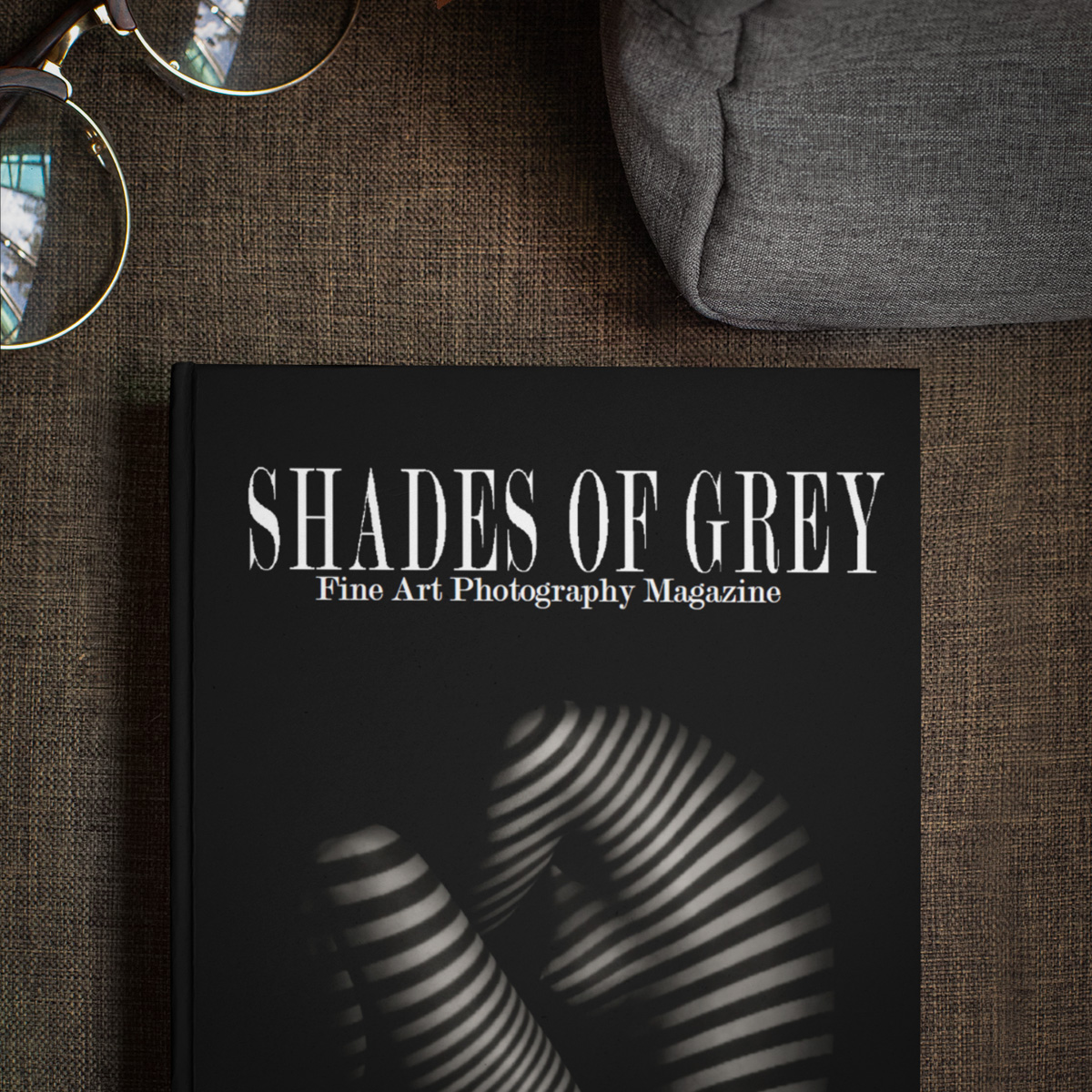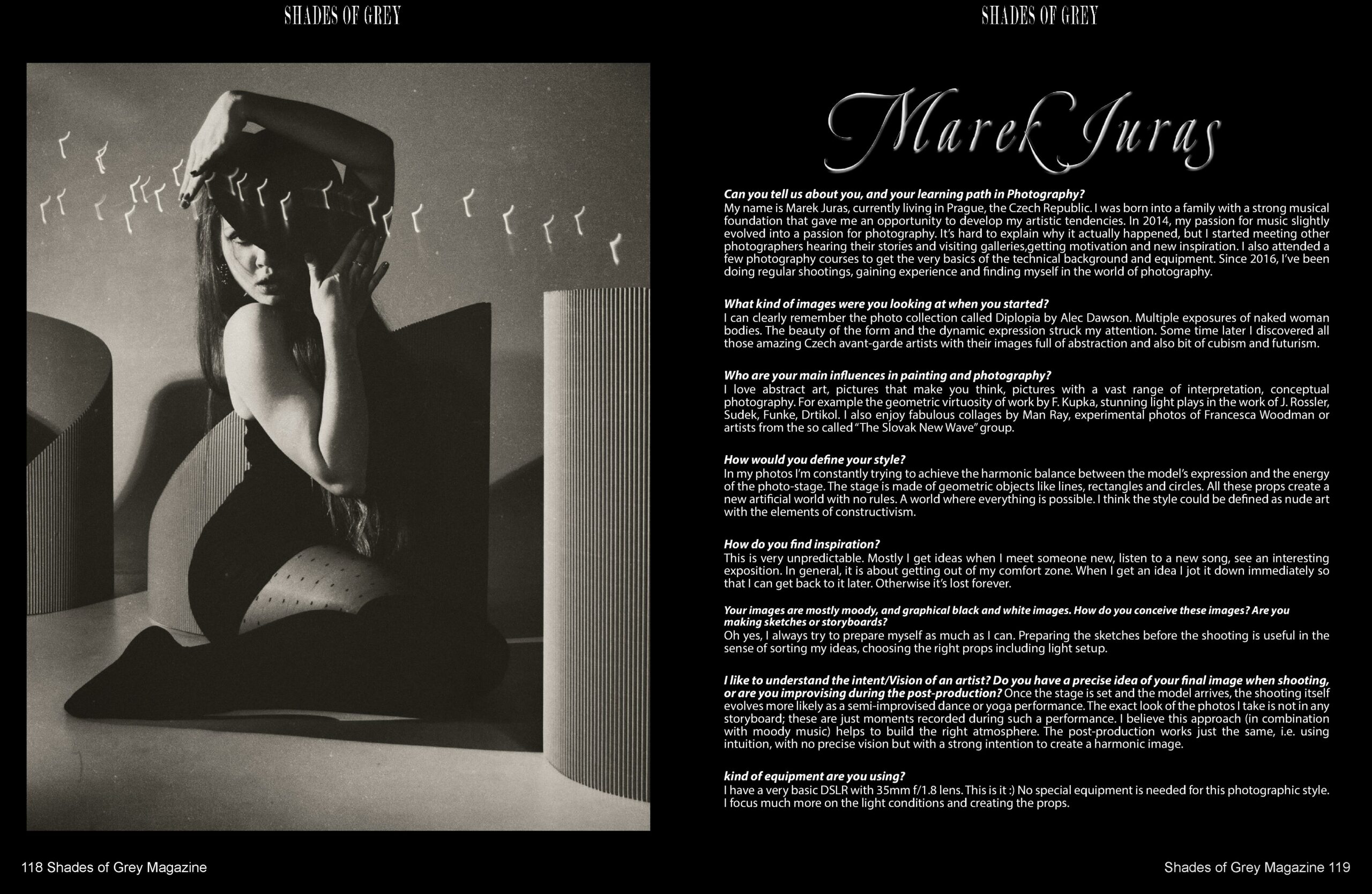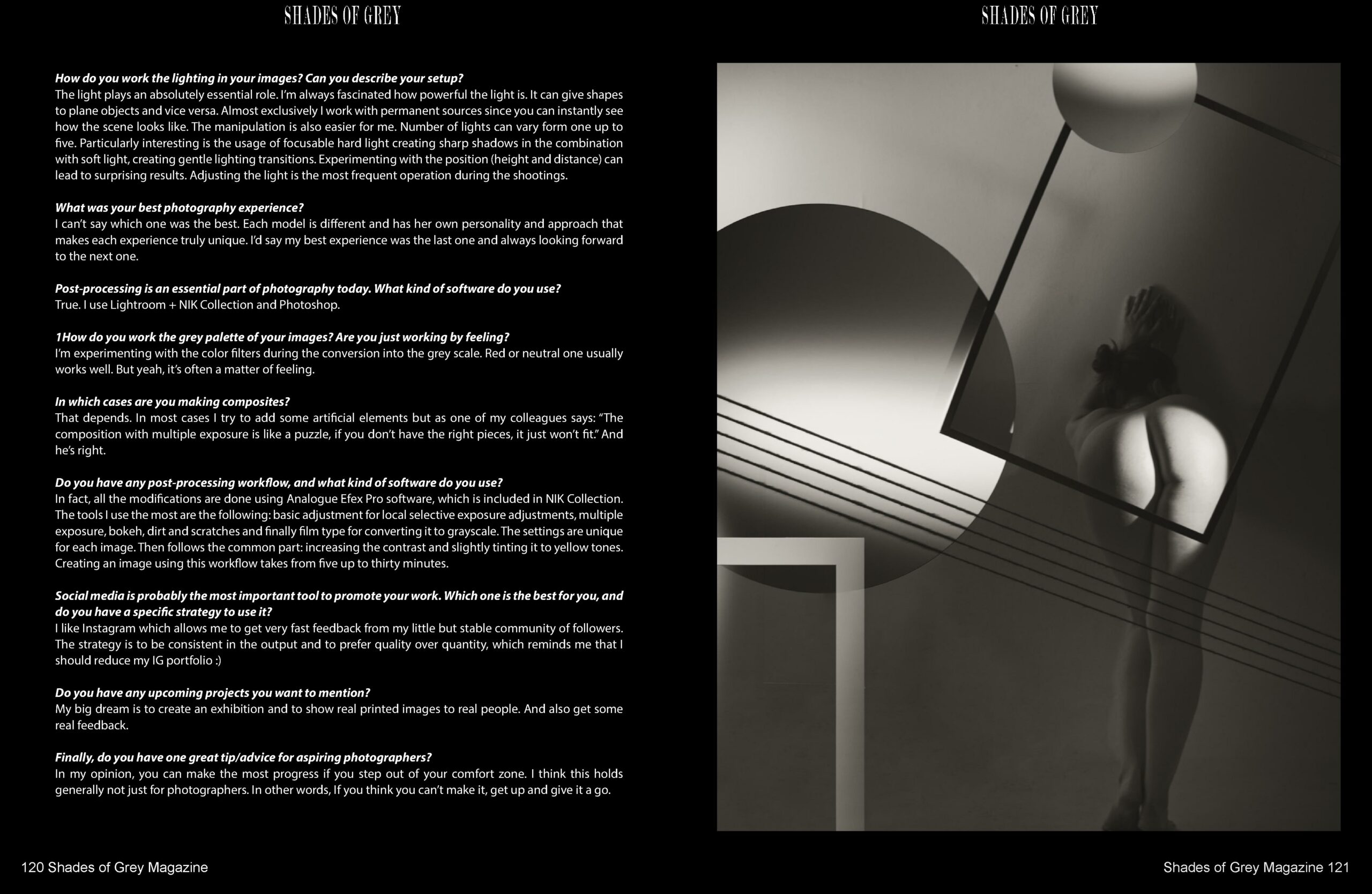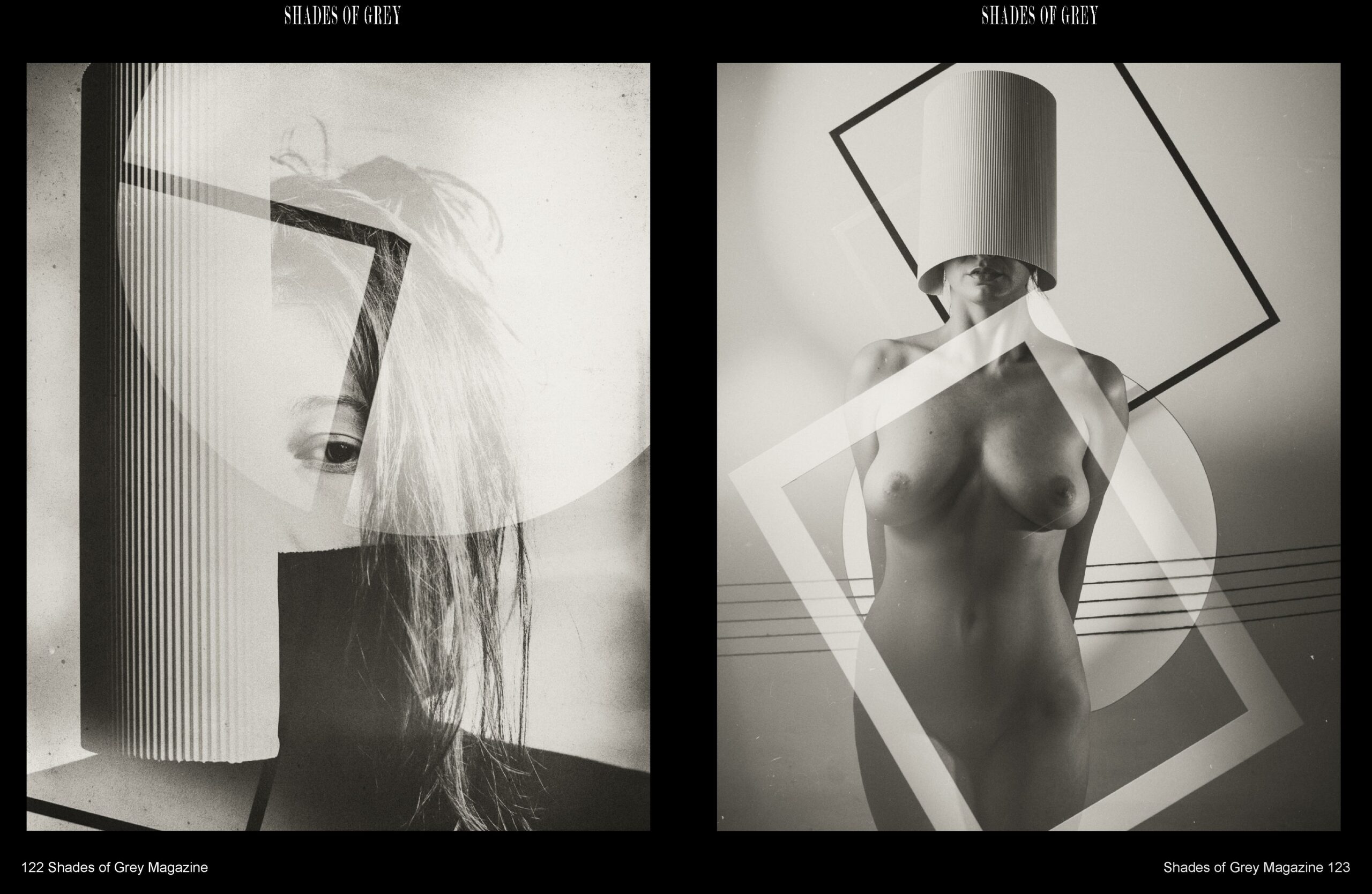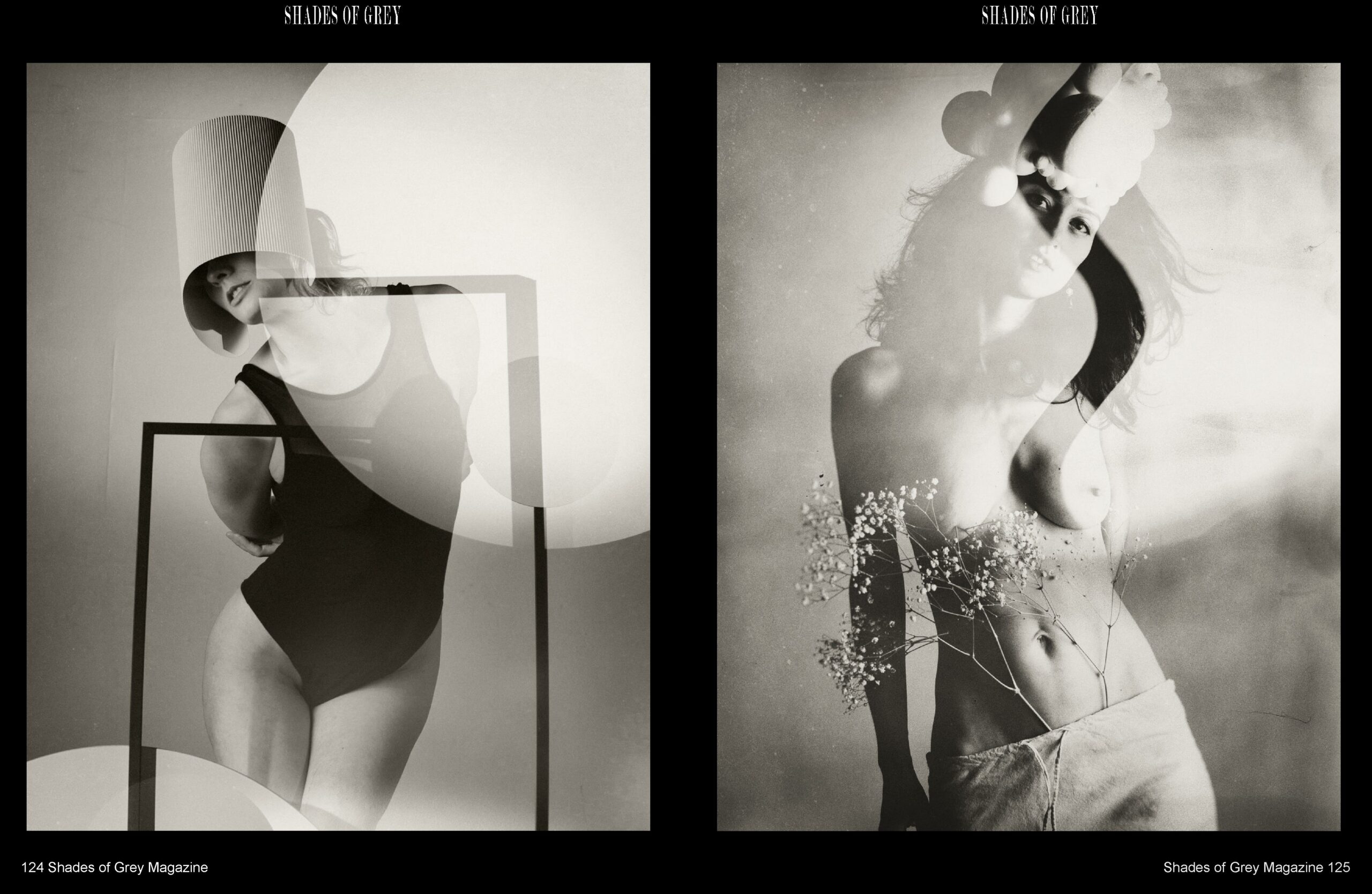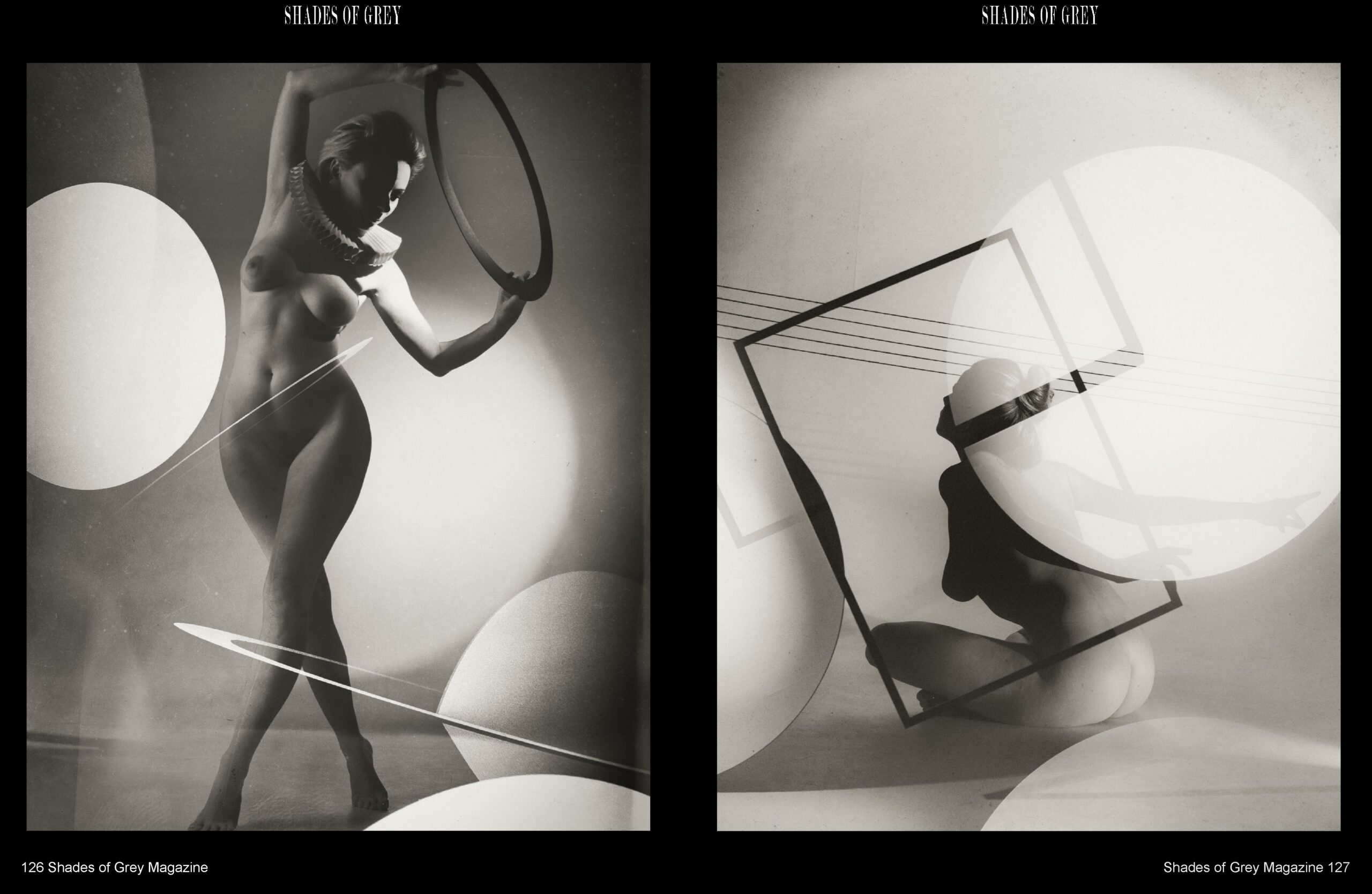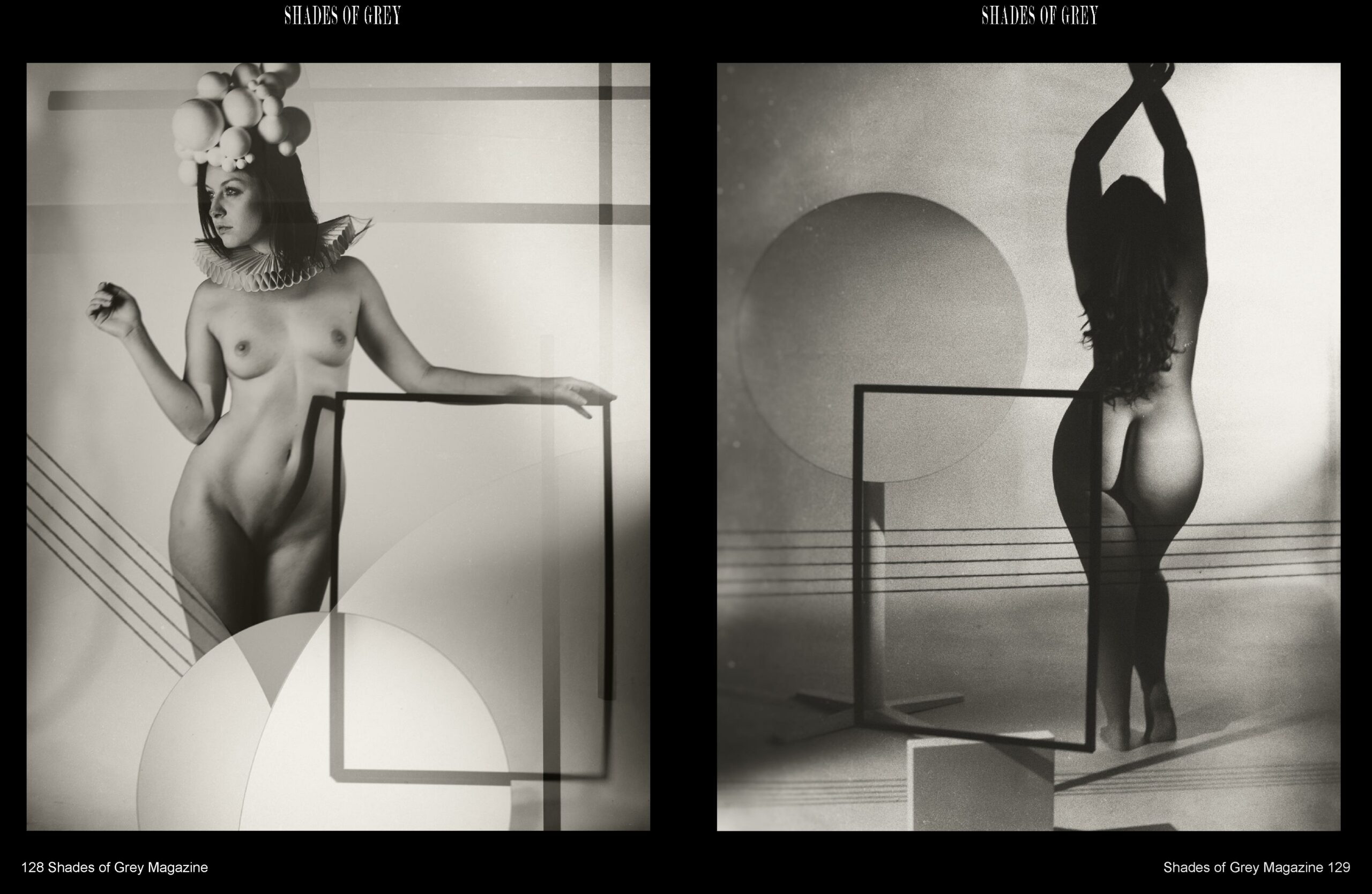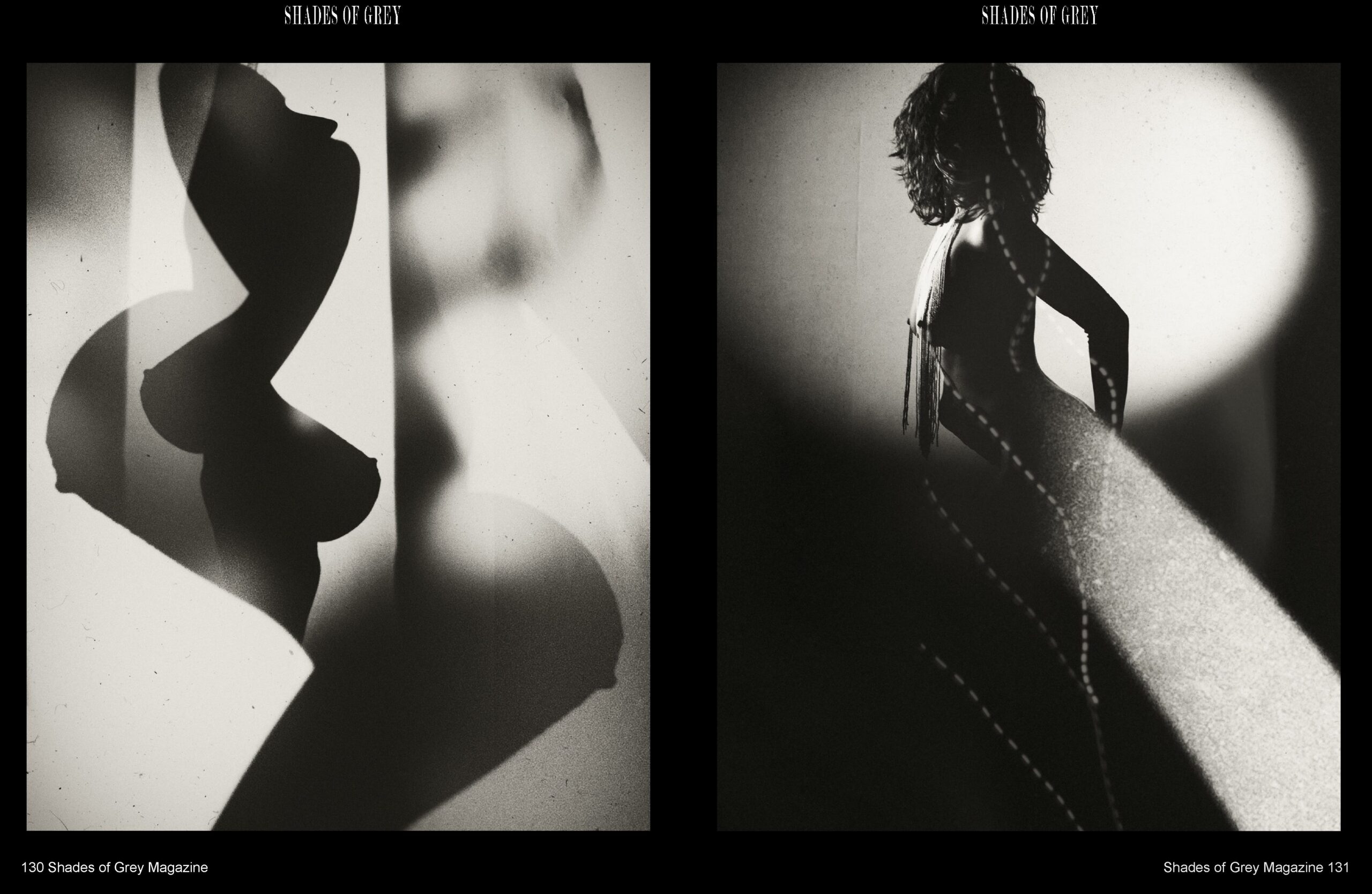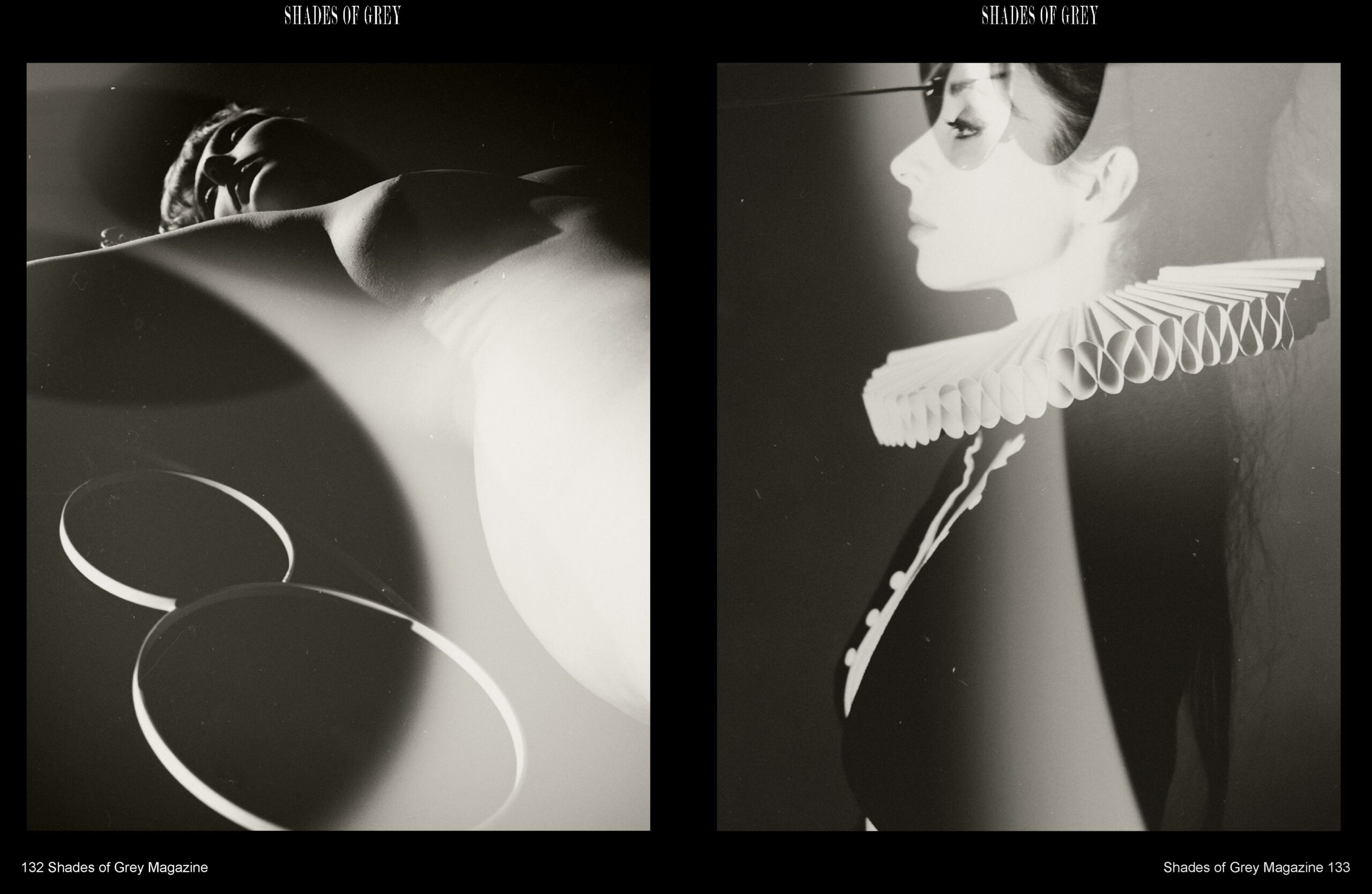Jean Michel Missri, editor of online magazine Shades of Grey asked me quite a lot of questions about my work. He gave me also a vast space for photographs. 16 pages!
Issue no.22 was released in November 2019. The interview transcription follows
Can you tell us about you, and your learning path in Photography?
My name is Marek Juras, currently living in Prague, the Czech Republic. I was born into a family with a strong musical foundation that gave me an opportunity to develop my artistic tendencies. In 2014, my passion for music slightly evolved into a passion for photography. It’s hard to explain why it actually happened, but I started meeting other photographers hearing their stories and visiting galleries, getting motivation, and new inspiration. I also attended a few photography courses to get the very basics of the technical background and equipment. Since 2016, I’ve been doing regular shootings, gaining experience, and finding myself in the world of photography.
What kind of images were you looking at when you started?
I can clearly remember the photo collection called Diplopia by Alec Dawson. Multiple exposures of naked woman bodies. The beauty of the form and the dynamic expression struck my attention. Some
time later, I discovered all those amazing Czech avant-garde artists with their images full of abstraction and also bit of cubism and futurism.
Who are your main influences in painting and photography?
I love abstract art, pictures that make you think, pictures with a vast range of interpretation, conceptual photography. For example the geometric virtuosity of work by F. Kupka, stunning light plays in the work of J. Rossler, Sudek, Funke, Drtikol. I also enjoy fabulous collages by Man Ray, experimental photos of Francesca Woodman or artists from the so called “The Slovak New Wave” group.
How would you define your style?
In my photos I’m constantly trying to achieve the harmonic balance between the model’s expression and the energy of the photo-stage. The stage is made of geometric objects like lines, rectangles and circles. All these props create a new artificial world with no rules. A world where everything is possible. I think the style could be defined as nude art with the elements of constructivism.
How do you find inspiration?
This is very unpredictable. Mostly I get ideas when I meet someone new, listen to a new song, see an interesting exposition. In general, it is about getting out of my comfort zone. When I get an idea I jot it
down immediately so that I can get back to it later. Otherwise it’s lost forever.
Your images are mostly moody, and graphical black and white images. How do you conceive these images? Are you making sketches or storyboards?
Oh yes, I always try to prepare myself as much as I can. Preparing the sketches before the shooting is
useful in the sense of sorting my ideas, choosing the right props including light setup.
I like to understand the intent/Vision of an artist? Do you have a precise idea of your final image when shooting, or are you improvising during the post-production?
Once the stage is set and the model arrives, the shooting itself evolves more likely as a semi-improvised dance or yoga performance. The exact look of the photos I take is not in any storyboard; these are just moments recorded during such a performance. I believe this approach (in combination with moody music) helps to build the right atmosphere. The post-production works just the same, i.e. using intuition, with no precise vision but with a strong intention to create a harmonic image.
What kind of equipment are you using?
I have a very basic DSLR with 35mm f/1.8 lens. This is it 🙂 No special equipment is needed for this photographic style. I focus much more on the light conditions and creating the props.
How do you work the lighting in your images? Can you describe your setup?
The light plays an absolutely essential role. I’m always fascinated how powerful the light is. It can give shapes to plane objects and vice versa. Almost exclusively I work with permanent sources since you can instantly see how the scene looks like. The manipulation is also easier for me. Number of lights can vary form one up to five. Particularly interesting is the usage of focusable hard light creating sharp shadows in the combination with soft light, creating gentle lighting transitions. Experimenting with the position (height and distance) can lead to surprising results. Adjusting the light is the most frequent operation during the shootings.
What was your best photography experience?
I can’t say which one was the best. Each model is different and has her own personality and approach that makes each experience truly unique. I’d say my best experience was the last one and always looking forward to the next one.
Post-processing is an essential part of photography today. What kind of software do you use?
True. I use Lightroom + NIK Collection and Photoshop.
How do you work the grey palette of your images? Are you just working by feeling?
I’m experimenting with the color filters during the conversion into the grey scale. Red or neutral one usually works well. But yeah, it’s often a matter of feeling.
In which cases are you making composites?
That depends. In most cases I try to add some artificial elements but as one of my colleagues says: “The composition with multiple exposure is like a puzzle, if you don’t have the right pieces, it just won’t fit.” And he’s right.
Do you have any post-processing workflow, and what kind of software do you use?
In fact, all the modifications are done using Analogue Efex Pro software, which is included in NIK Collection. The tools I use the most are the following: basic adjustment for local selective exposure
adjustments, multiple exposure, bokeh, dirt and scratches and finally film type for converting it to grayscale. The settings are unique for each image. Then follows the common part: increasing the
contrast and slightly tinting it to yellow tones. Creating an image using this workflow takes from five up to thirty minutes.
Social media is probably the most important tool to promote your work. Which one is the best for you, and do you have a specific strategy to use it?
I like Instagram which allows me to get very fast feedback from my little but stable community of followers. The strategy is to be consistent in the output and to prefer quality over quantity, which reminds me that I should reduce my IG portfolio 🙂
Do you have any upcoming projects you want to mention?
My big dream is to create an exhibition and to show real printed images to real people. And also get some real feedback.
Finally, do you have one great tip/advice for aspiring photographers?
In my opinion, you can make the most progress if you step out of your comfort zone. I think this holds generally not just for photographers. In other words, If you think you can’t make it, get up and give it a go.

